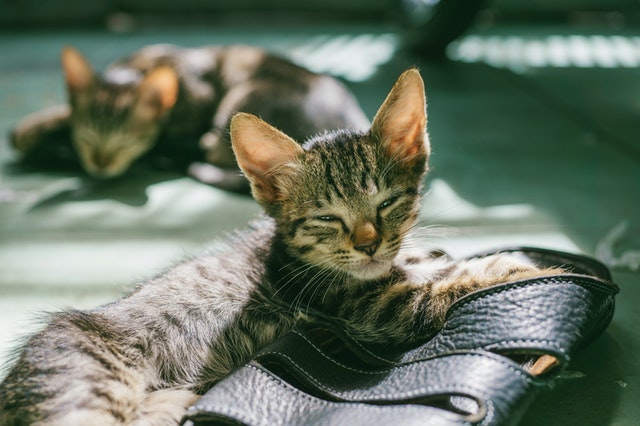One question I see asked a lot is “How long will my cat or kitten continue to shed the virus after testing positive?” And I’ve seen all sorts of answers. The vets I worked at (which are shelter vets at open-intake shelter) always told me “14 days from the last day symptomatic.” Once they hit that date, they could go back to the shelter for surgery and be put in adoptions. But I know many people are dealing with different situations, so let’s break it down.
To start, let’s separate cats into four categories:
- Category A: Vaccinated, healthy adult cats and kittens over 5 months of age
- Category B: Healthy kittens who have received at least 2 vaccinations, but are under 5 months.
- Category C: Healthy kittens who have received only 1 vaccination, and vaccinated adult cats with compromised immune systems.
- Category D: Unvaccinated kittens and cats.
Category A and D are the simplest answers. Healthy and vaccinated cats are extremely low risk of contracting panleukopenia even if directly exposed. I speak from experience on this. It’s still best to keep the kittens quarantined for 14 days, but you don’t have to worry about cats that fall in category A.
Category D should never be exposed to any other cats or kittens. They are high risk not only for panleukopenia but a variety of other virus that cats may carry, but not be symptomatic for. Cats can shed the panleuk virus 2-3 days before showing symptoms. The time between 3 weeks of age and when a kitten is first vaccinated is the most risky for them. Their mother’s immunity is starting to wear off and they become susceptible. This is why I, and most shelters, vaccinate kittens at 4 weeks, which is the earliest allowed.
But what about the other two categories? Well, to answer that let’s see what the experts say as to how long a kitten/cat can shed the virus
According to the AVMA, “In most cases, once a cat recovers from FP, it will not infect other cats through direct contact, but some recovered cats can shed the virus in their stool and urine for up to 6 weeks.”
Koret Shelter Medicine states “Viral shedding can continue for up to ~14 days following recovery from clinical signs thus isolating recovered animals for an additional two weeks is the safest option to limit spread within the shelter.” They also recommend snap testing kittens prior to moving them into general population as it is “suggestive that significant quantities of virus are no longer being shed. In practice, SNAP testing recovered kittens/cats and moving the negative animals to adoption is relatively low risk, especially if these animals can be housed separately from other kittens and recently vaccinated adults (or immediately adopted into a home meeting these same criteria).”
Maddie’s fund says that “Recovered cats may shed for up to 3 weeks after recovering. Shedding can
be intermittent. Negative SNAP test likely indicates reduced/negligible shedding.”
What’s the answer?
For Category C, the best solution is to wait at least 6 weeks after the last day of symptoms before allowing them to have any interactions. As to Category B, that answer is a little more complex.
If adopting a panleukopenia recovered kitten to a home with another kitten, I would make sure that the other kitten has received at least 2 FVRCP vaccines. The recovered kitten should be 14 days post-symptoms of panleukopenia and be snap tested to indicate that they are not shedding significant quantities of the virus. This doesn’t guarantee anything, but the risk is minimal.
